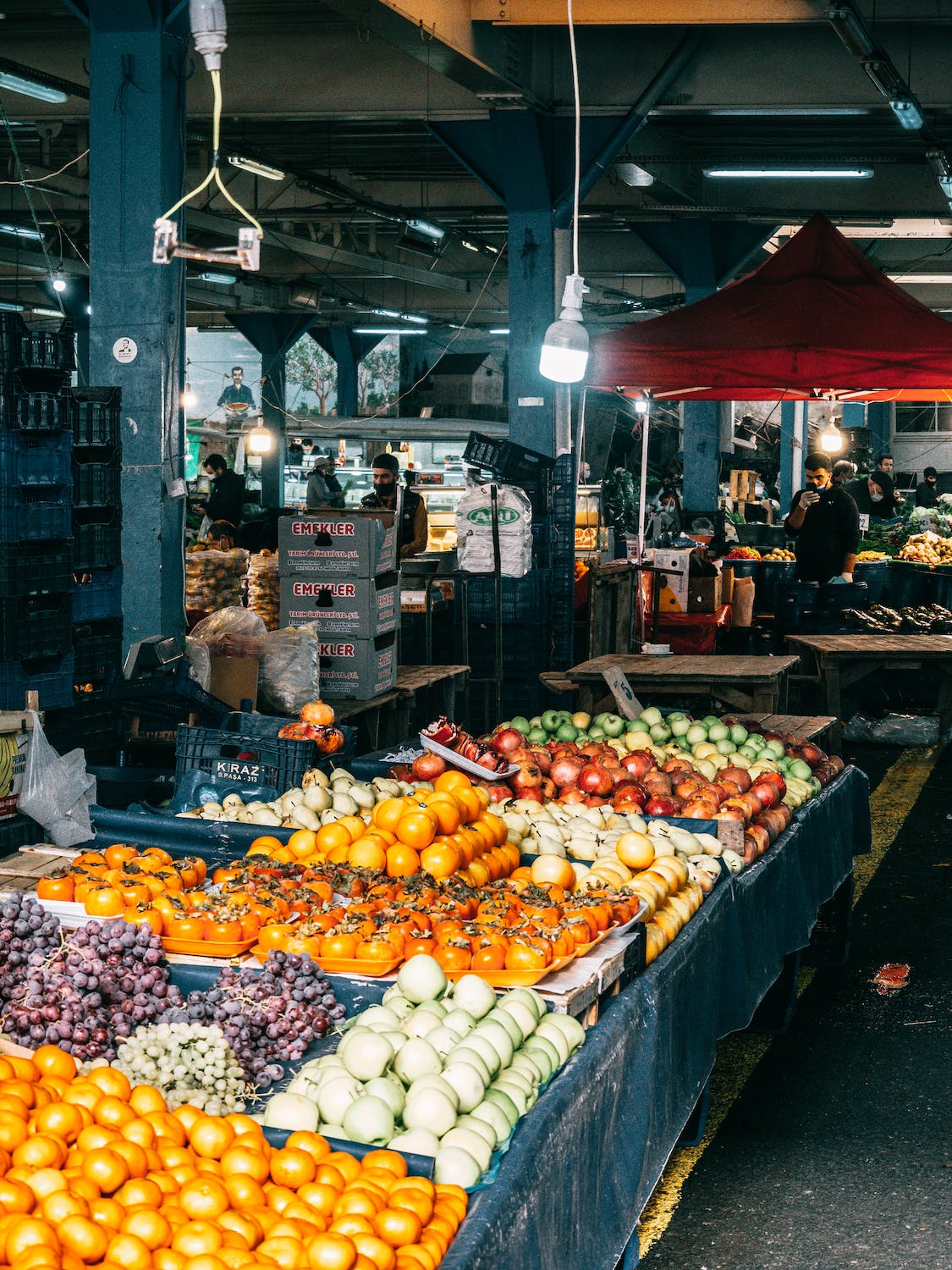Are you tired of the same-old bland produce at your local grocery store? Have you ever considered where your food comes from and how it gets to your plate? Eating local is becoming a popular trend for many reasons. Not only does it provide fresher, healthier options, but also supports the local economy and reduces carbon emissions. In this blog post, we will dive into the importance of eating local and explore ways you can incorporate more locally sourced foods into your diet. Get ready to discover the journey from farm to table!
In today’s fast-paced world, where convenience reigns supreme, it’s easy to forget the importance of eating locally sourced food. But did you know that every time you bite into a juicy apple or savor a delicious slice of cheese from your local farmer’s market, you’re supporting not only small businesses but also the health of our planet? In this blog post, we’ll dive deeper into why “farm-to-table” is more than just a trendy catchphrase and explore the numerous benefits of eating fresh, locally grown produce. So grab your fork and let’s get started!
Introduction to Local Food
When you eat local, you are supporting your community in a very direct way. You are keeping money in the local economy and helping to create jobs. You are also helping to preserve farmland and open space. When farms succeed, so does the environment.
Eating local also means that you know where your food comes from and how it was grown or raised. This is important for both food safety and environmental reasons. When you buy from a local farmer, you can ask questions about how the food was produced and what methods were used. This type of transparency is not always possible with large-scale industrial agriculture.
Finally, eating local simply tastes better! Food that is fresh and hasn’t traveled far is going to be more flavorful and nutritious. When fruits and vegetables are allowed to ripen on the vine or tree, they develop more complex sugars which make them taste sweeter.
So why not give eating local a try? Your taste buds and your community will thank you!
Benefits of Eating Local Food
There are many benefits to eating local foods. For one, local foods are typically fresher and thus more nutritious than foods that have been shipped long distances. Local foods are also better for the environment, since they require less transportation. And supporting local farmers helps to ensure a strong local economy.
Of course, freshness is not the only reason to eat local foods. Local foods often have more flavor than mass-produced foods, since they are grown using traditional methods and allowed to ripen fully on the vine or tree. And because they haven’t been shipped long distances, local foods tend to be less expensive than supermarket alternatives.
So next time you’re at the farmers market or your local grocery store, take a moment to think about all of the benefits of eating locally grown food. Your body and your community will thank you!
Sources for Local Foods
In our current food system, the average meal travels over 1,500 miles to get to our plates. This often means that our food is grown in one place, shipped to another for processing, and then sent to yet another location for distribution before finally arriving at the grocery store. The entire process can take weeks, and all of that transportation uses a significant amount of fossil fuels.
Eating local foods is one way to reduce your carbon footprint and support sustainable agriculture. When you buy local foods, you are supporting farmers in your community who are using sustainable practices. You are also getting fresher, more nutritious food because it hasn’t been shipped long distances and doesn’t need to be treated with chemicals to keep it fresh.
There are many ways to find local foods. You can visit your local farmers market or join a Community Supported Agriculture (CSA) program. You can also look for restaurants that source their ingredients from local farms. And, of course, you can always grow your own food!
Tips for Shopping and Preparing Local Food
When it comes to getting the most out of local foods, there are a few key things to keep in mind. First, try to shop at farmers””””” markets or directly from farms whenever possible. This not only supports local businesses but also ensures that you’re getting the freshest food possible.
Another important tip is to seasonal eating in mind. Not only will this help you save money, but it will also allow you to enjoy produce at its peak flavour. Eating locally also means being flexible with your recipes and learning how to cook with whatever is in season.
Finally, don’t forget about storage and food safety when preparing local foods. Many items can be frozen or canned so that you can enjoy them year-round. And as always, be sure to wash your hands and all cooking surfaces thoroughly before starting any meal.
Recipes Using Locally Sourced Ingredients for Local Food
One of the best things about eating local is that you can get the freshest ingredients possible. This means that your recipes will be packed with flavour! Here are some delicious recipes that use locally sourced ingredients:
–Arugula and Beet Salad with Goat Cheese: This salad is bursting with flavour and nutrients! The sweetness of the beets pairs perfectly with the tangy goat cheese and peppery arugula.
–Roasted Butternut Squash Soup: This soup is comfort food at its finest! The roasted squash gives the soup a rich, creamy texture, while the sage and thyme add a beautiful depth of flavour.
–Pumpkin Spice Latte: Skip the Starbucks line and make your pumpkin spice latte at home! Using fresh pumpkin puree makes all the difference in this cosy fall beverage.
–Apple Crisp: What’s more local than apples in the fall? This classic dessert is made even better when made with fresh, in-season apples. Add a scoop of ice cream on top for an extra special treat!
How to Support the Local Community Through Food Choices
There are many ways to support the local community through food choices. Perhaps the most obvious way is to buy locally grown and produced food. This supports the local economy and farmers who may be struggling. It also reduces your carbon footprint as food doesn’t have to travel as far.
Another way to support the local community through food choices is to buy from farmers’ markets or join a CSA (community-supported agriculture). This ensures that you are getting fresh, seasonal produce that hasn’t been shipped in from elsewhere. It also helps to build relationships with the people who are growing your food.
Finally, you can support the local community by choosing to eat at restaurants that use locally sourced ingredients. This not only supports the local economy, but it also helps to reduce your carbon footprint as the ingredients haven’t been shipped in from far away.
Conclusion
Eating local is a great way to support your community, reduce carbon emissions, and enjoy the freshest possible food. As consumers, we have more control over our diets than ever before. By educating ourselves on where our food comes from and making conscious decisions to purchase locally-grown produce when able, we can make real strides in reducing greenhouse gases associated with the transportation of goods across long distances as well as encouraging economic growth in our backyards. Ultimately, it all comes down to understanding that eating locally isn’t just good for you –– it’s also good for the planet.










